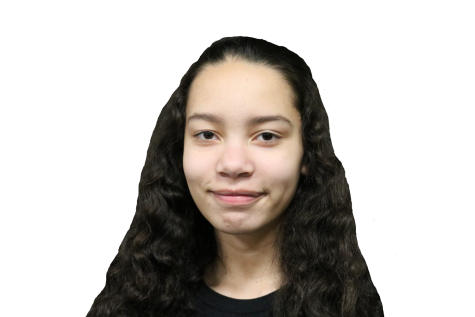Your donation will support the student journalists of the Evanstonian. We are planning a big trip to the Journalism Educators Association conference in Nashville in November 2025, and any support will go towards making that trip a reality. Contributions will appear as a charge from SNOSite. Donations are NOT tax-deductible.
Held back, pushed away
February 22, 2021
 As a person of color, walking into places that are predominantly white, it’s incredibly easy to feel excluded or like you don’t belong. Whether this is intentional or not, the constant crush of white folks contributes to my feelings that I don’t belong for countless reasons, including the fact that no one looks like, or can relate to, you. A phrase called impostor syndrome explains why in numerous situations, it has been difficult for me to find my place in these spaces.
As a person of color, walking into places that are predominantly white, it’s incredibly easy to feel excluded or like you don’t belong. Whether this is intentional or not, the constant crush of white folks contributes to my feelings that I don’t belong for countless reasons, including the fact that no one looks like, or can relate to, you. A phrase called impostor syndrome explains why in numerous situations, it has been difficult for me to find my place in these spaces.
Before I was introduced to the Evanstonian my sophomore year, I didn’t know much about it. As I became involved with it, one thing did become relatively clear: there was a limited number of Black, Indigenous, People Of Color (BIPOC) and diversity on staff. This wasn’t something I was extremely aware of at first, and it wasn’t until I reflected that I realized this truth. Now, in my junior year, I’m on the editorial board, where this lack of diversity has become increasingly clear as I work with writers and review stories.
From my perspective, in the communities I’ve entered that lack racial diversity, I have felt the slight tinge that members wonder what “role” I would play in the space. These thoughts aren’t always translated into actions or even words, simply felt and something I’m constantly aware of. I can feel the questions of ‘Does she have anything important to add?’ ‘Is she even smart enough to be in this space?’ This leads to a feeling of exclusion and being out of place in a seemingly welcome space, as well as the idea that my voice and content ideas aren’t valid.
What this often comes down to is creating a space where every student can authentically be who they are. Whether this be specific to BIPOC or on a broader scale, having a space for equity and inclusion to strengthen the community for every person within it, while simultaneously maintaining liberation. This could be the difference between one who stays in the space, and one who finds themselves drifting away.
“A lot of people feel that way. But it can feel more pronounced when you’re already feeling marginalized because of your race or gender. We all might feel like we’re inadequate, but it can become more pronounced for a person of color,” ETHS English educator and writing ambassador Angela Sangha-Gadsden says.
Within the Evanstonian I would like to say every perspective is represented and has a space, but this is not even relatively true. Being on the Evanstonian as a person of color, a place where voices and pieces are openly shared among staff, impostor syndrome has certainly been increasingly present. I often find myself holding back on writing certain things and, after hearing the ideas of my peers at budget meetings, begin to rethink my original story idea. Though I’ve never been told I can’t write on a certain topic, I’m extremely aware that I’d be one of the few writing stories pertaining to racial or systemic issues. The reality is, in a space like this, they have to be heard. How will they learn or know what our perspectives are if we can’t feel open enough to tell them?
The implication of this is the pushing away people of color interested in joining in activities like the Evanstonian. Additionally, this reality aligns with the historic truth that white people dominate spaces where the voices of people of color need to be heard. the Evanstonian needs a more diverse group of individuals expressing themselves and sharing their stories. Having a predominantly white publication writing to a predominantly white audience only perpetuates the cycle of the crucial stories of BIPOC being pushed away.
“I tell my students that every voice is valuable. I want to hear something from everybody in the room, and I want everyone to know that their ideas are valid. Just because another student is louder than you doesn’t mean that their ideas are better than yours,” biology teacher Marla Issacs says.
Ultimately, experiencing impostor syndrome also perpetuates the idea that these spaces should inherently exclude BIPOC, which couldn’t be farther from the truth. It’s imperative these inequities are brought to the forefront and we are given a space where our voice is shared. If we’re truly open to everyone, a more diverse staff is vital for all to feel represented and heard, which is not the case currently.
Another layer within the Evanstonian becomes positionality—who is writing which pieces, and how their identity impacts their coverage. As mentioned previously within a predominantly white space, there will likely be a predominantly white audience. With this comes the fact that the staff relies on, in our case the few, BIPOC to explore the issues of race and racism within the school and community. One common theme with this is the fact that, when the white people write on these issues, there is less of an opinion distributed. They will report and display the information but remain neutral. And I have found, even when white Evanstonian staff do opinionated their articles, there is an underlying patronizing, pitying tone towards BIPOC and the issues they’re addressing. However, a white reporters’ history of remaining “objective” when reporting on communities of color had not benefited said communities in the slightest as found in a 2016 article by Sage Journal.
“It’s that pressure of being a representative of all because you’re the one, or the few, so you’re carrying the burden. That can be a lot, and it can be like ‘I don’t want to do that, I’m just trying to be me.’ I’m not trying to carry the whole BIPOC experience. It’s exhausting,” Sangha explains.
Finally, when making student publications and co-curricular activities a safer place, a large element has to do with the actions of facilitators of those spaces and what intentions they hold. Although not all of our advisors, sponsors and coaches need to be BIPOC educators or staff, the energy students feel when they enter that space should be welcoming and open.
“Make sure they know that it’s all-inclusive and that they want people of all backgrounds to join so that people don’t feel left out, and they have a safe space to connect with people,” freshman Brianna Ross says.
When this is implemented, impostor syndrome can effectively be prevented within the space, and we can truly be our authentic selves through our work.
